|
|
|
Sort Order |
|
|
|
Items / Page
|
|
|
|
|
|
|
| Srl | Item |
| 1 |
ID:
099206
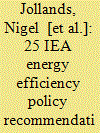

|
|
|
|
|
| Publication |
2010.
|
| Summary/Abstract |
The imperative to pursue energy efficiency improvements is clearly on the political agenda at all levels of governments. This paper explores the lessons from past attempts at galvanising international efforts to expand energy efficiency activities through the use of international-level recommendations. Drawing on these lessons, the paper outlines the IEA response to the call for policy advice on energy efficiency through the G8 Gleneagles Plan of Action. Specifically, the paper outlines a 'necessary conditions' framework that was used to develop a set of energy efficiency policy priorities and describes the subsequent recommendations presented to the G8 in Hokkaido-Toyako Summit in 2008. The recommendations cover 25 fields of action in seven priority areas: buildings, appliances, lighting, transport, industry, energy utilities and cross-sectoral issues. Together, the suite of recommendations sets out an ambitious road map for global energy efficiency improvement. If implemented globally without delay, they could save around 8.2 GtCO2/yr or 96 EJ/yr by 2030. This is equivalent to roughly twice the current total EU energy-related CO2 emissions.
|
|
|
|
|
|
|
|
|
|
|
|
|
|
|
|
| 2 |
ID:
128625
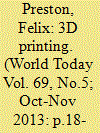

|
|
|
| 3 |
ID:
167025
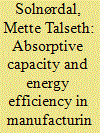

|
|
|
|
|
| Summary/Abstract |
Increased energy efficiency (EE) in manufacturing firms is important for confronting climate challenges. However, the information barrier is considered a major restriction on EE innovation. Building on the theory of absorptive capacity and the current EE literature, we argue that this barrier relates to firms' ability to assimilate and exploit information. Thus, this study's objective is to analyse firms' knowledge characteristics as determinants of EE innovation. We perform logit regressions using a Norwegian panel dataset for the period 2010–2014. The results are based on statistical correlations between data points that have potential uncertainties. Still, the main implications from our study are that prior knowledge, in terms of higher educated workforce, knowledge development, in terms of R&D capacity, and external knowledge cooperation, such as cooperation with universities and competitors, increase firms' pursuit of EE innovation. Further, the results also imply that there is an interaction effect between higher educated workforce and collaboration with universities. These results suggest that policy makers should consider firms' ability to assimilate and exploit information. This can be done by providing information according to firms' needs and absorptive capacity, and offering possibilities for firms to increase this capacity.
|
|
|
|
|
|
|
|
|
|
|
|
|
|
|
|
| 4 |
ID:
177119
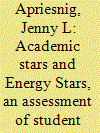

|
|
|
|
|
| Summary/Abstract |
Considerable efforts have been made to increase the energy efficiency of school buildings across the country. Despite this, limited research examines the relationship between energy efficiency and student productivity. We use a unique panel dataset from a suburban school district that includes information on school building energy efficiency, measured by Energy Star scores, and other environmental attributes of buildings, as well as measures of individual student achievement, measured by standardized test scores. The empirical analysis controls for student and school fixed effects and evaluates the relationship between school characteristics and achievement. Separate models also evaluate how school characteristics impact student health and behavioral outcomes and the how these outcomes influence student test scores. We find no evidence that Energy Star scores have an impact on the indoor school environment or student performance on standardized tests, suggesting that building energy performance does not come at a cost to the performance of building inhabitants. We also find positive relationships between building thermal comfort and visual quality and standard test scores. Overall, the results highlight the importance of considering both the environmental and human capital impacts associated with decisions about investments in school infrastructure.
|
|
|
|
|
|
|
|
|
|
|
|
|
|
|
|
| 5 |
ID:
104884
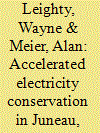

|
|
|
|
|
| Publication |
2011.
|
| Summary/Abstract |
An avalanche destroyed the main hydroelectric transmission line to Juneau, Alaska in April, 2008. Diesel-generated electricity was substituted, causing electricity prices to increase 500% for 45 days. Electricity demand fell by 25% during the supply disruption. Most of the reduction occurred before the higher rates were implemented. Some conservation - about 8% of historic consumption - persisted after the transmission line was repaired and prices returned to normal. Consumers reduced energy use through a combination of new habits and technical improvements. A survey of residential consumers indicated that the average household undertook 10 conservation actions, with major changes in lighting, space heating, fuel switching, and water and appliance use. We propose a method for prioritizing conservation actions for promotion according to their impact in electricity savings (as a function of popularity, effectiveness, and persistence) and a dynamic framework for electricity use before, during, and after a supply disruption (i.e., both the magnitude and rates of change in electricity conservation).
|
|
|
|
|
|
|
|
|
|
|
|
|
|
|
|
| 6 |
ID:
103393


|
|
|
|
|
| Publication |
2011.
|
| Summary/Abstract |
It is imperative to tackle the issue globally mobilizing all available policies and measures. One of the important ones among them is technology transfer and diffusion. By utilizing international co-operation, industry can promote such measures in two ways: through government policy and through industry's own voluntary initiative. Needless to say, various government policies and measures play essential role. By the same token, industry initiative can complement them. There is much literature documenting the former. On the contrary there are few on the latter. This paper sheds light on the latter. The purpose of this paper is to explore the effectiveness of global voluntary sectoral approach for technology diffusion and transfer based on steel sector experience.
The goal is to contribute toward building a worldwide low-carbon society by manufacturing goods with less energy through international cooperation of each sector. The authors believe that the voluntary sectoral approach is an effective method with political and practical feasibilities, and hope to see the continued growth of more initiatives based on this approach.
|
|
|
|
|
|
|
|
|
|
|
|
|
|
|
|
| 7 |
ID:
162270
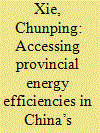

|
|
|
|
|
| Summary/Abstract |
The transport sector is attracting increasingly attention in the context of climate change and sustainable development, for its rapidly growing demand for energy and heavy reliance on oil products. Especially in China, where the demands for transportation are tremendous and ever-increasing, it is worthy to explore the provincial variations in energy efficiency in the transport sector, in order to enhance energy efficiency and to promote energy savings in this sector. By using stochastic frontier analysis (SFA) approach, this paper calculates the provincial energy efficiency as well as energy saving potential in China’s provincial transport sector over 2007–2016. Results suggest that China’s national average energy input efficiency in the transport industry is 0.673 during the sample period, which implied that relatively large degree of non-efficiency exists in this sector. Besides, the increase of government support (GS), the improvement of road condition (RC) and public transport (PT) are influencing factors for the improvement of China’s provincial energy efficiency in the transport industry. Additionally, energy saving potential in the transport sector is also estimated in this paper. It is shown that, although energy efficiency in the eastern China is the highest (much higher than the country-wide level), the estimated absolute amount of the energy saving potential in the eastern area is significantly larger than those in the central area and western area due to the fact that the eastern area contributes to the largest share of the total energy consumption in this sector.
|
|
|
|
|
|
|
|
|
|
|
|
|
|
|
|
| 8 |
ID:
109311


|
|
|
|
|
| Publication |
2011.
|
| Summary/Abstract |
In order to promote energy efficiency and emission reduction, the importance of improving building energy efficiency received sufficient attention from Chinese Government. The heat metering and energy efficiency retrofit for existing residential buildings of 0.15 billion m2 in northern heating regions of China was initiated in 2007 and completed successfully at the end of 2010. This article introduced the background and outline of the retrofit project during the period of 11th five-year plan. Numerous achievements that received by retrofit such as environmental protection effect, improvement of indoor environment, improvement of heating system, investment guidance effect, promotion of relevant industries and increasing chances of employment were concluded. Valuable experience that acquired from the retrofit project during the period of 11th five-year plan was also summarized in this article. By analyzing the main problems emerged in the past, pertinent suggestions were put forward to promote a larger scale and more efficient retrofit project in the period of 12th five-year plan.
|
|
|
|
|
|
|
|
|
|
|
|
|
|
|
|
| 9 |
ID:
104821


|
|
|
| 10 |
ID:
116997
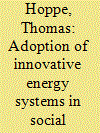

|
|
|
|
|
| Publication |
2012.
|
| Summary/Abstract |
Thanks to new insights on the impacts that dwellings have throughout their life cycles, there has been increased attention to retrofitting innovative energy systems (IES) in existing housing. This paper uses an explorative case study design to gain more knowledge about the governance aspects of this under-researched topic. The central research question is: Which factors influence the adoption of innovative energy systems in social housing sites during renovation projects? To answer this question, eight large-scale renovation projects in The Netherlands were investigated. These case studies allowed the identification of barriers, enabling factors and perspectives from three main actors-housing associations, tenants and local authorities. It turns out that adopting IES encounters many barriers: lack of trust between project partners, delay in project progress, financial feasibility considerations, lack of support from tenants, lengthy legal permit procedures, over-ambitious project goals, poor experiences in previous projects, and IES ambitions that are not taken serious by key decision-makers. Furthermore, IES were only successfully fitted in three of the eight projects. Moreover, ambitions were lowered as the projects progressed in all the cases investigated. The study calls for further systematic, in-depth comparison of fitting IES in large-scale renovation projects in social housing.
|
|
|
|
|
|
|
|
|
|
|
|
|
|
|
|
| 11 |
ID:
177357


|
|
|
|
|
| Summary/Abstract |
Energy efficiency policies often involve low-interest loans for retrofit measures in private buildings; the main target of these loans are meant to be households with otherwise poor access to capital. However, such programs can only be successful if the targeted households also take up these loans. This paper studies the relation between access to capital and debt aversion and the adoption of retrofit measures in European Union countries, employing a demographically representative household survey including about 6600 homeowners in France, Germany, Italy, Poland, Romania, Spain, Sweden, and the United Kingdom. The findings suggest that debt aversion negatively affects the adoption of retrofit measures by homeowners. In particular, debt-averse homeowners with poor access to capital are less likely to have adopted retrofit measures than non-debt-averse homeowners with poor access to capital. The findings further provide evidence that low-interest loan programs should be targeted at younger homeowners with lower income and less formal education.
|
|
|
|
|
|
|
|
|
|
|
|
|
|
|
|
| 12 |
ID:
167000
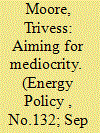

|
|
|
|
|
| Summary/Abstract |
Concerns about climate change, energy security and energy productivity are driving countries to improve energy and thermal efficiency of their housing. Australia established a Nationwide House Energy Rating Scheme (NatHERS) in the mid-1990s to encourage improved energy performance, before regulating minimum energy standards in the 2000s. While minimum standards in Australia have improved, they fall short of requirements for a low carbon future. Resistance to new standards has been predicated on the argument that consumers will drive the market. Others argue that market failures result in lower than optimal house energy performance. There has been limited investigation of this in the Australian context. This paper analyses over 187,000 NatHERS certificates from 2016 to 2018 to determine the response to market desires and the regulatory environment. The research finds 81.7% of housing is designed only to meet minimum standards, and 98.5% falls below the economic and environmental optimum. This demonstrates significant market failure and indicates that building energy regulation is a powerful instrument for delivering improved performance outcomes. If governments are seeking a larger contribution from the housing sector to carbon abatement and other energy policies, systematically raising minimum building energy regulations is probably the most important and effective mechanism.
|
|
|
|
|
|
|
|
|
|
|
|
|
|
|
|
| 13 |
ID:
094283
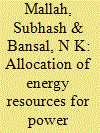

|
|
|
|
|
| Publication |
2010.
|
| Summary/Abstract |
This paper deals with MARKAL allocations for various energy sources, in India, for Business As Usual (BAU) scenario and for the case of exploitation of energy saving potential in various sectors of economy. In the BAU scenario, the electrical energy requirement will raise up to 5000 bKwh units per year or 752 GW of installed capacity with major consumers being in the industry, domestic and service sectors. This demand can be met by a mix of coal, hydro, nuclear and wind technologies. Other reneawbles i.e. solar and biomass will start contributing from the year 2040 onwards. By full exploitation of energy saving potential, the annual electrical energy demand gets reduced to 3061 bKwh (or 458 GW), a reduction of 38.9%.The green house gas emissions reduce correspondingly. In this scenario, market allocations for coal, gas and large hydro become stagnant after the year 2015.
|
|
|
|
|
|
|
|
|
|
|
|
|
|
|
|
| 14 |
ID:
127934
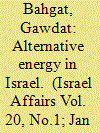

|
|
|
|
|
| Publication |
2014.
|
| Summary/Abstract |
Unlike other countries in the Middle East, Israel has limited hydrocarbon deposits. Since its founding in 1948 Israel has largely relied on foreign supplies to meet almost all its energy needs. In recent years substantial natural gas deposits have been discovered in the Eastern Mediterranean. These discoveries are likely to fundamentally improve the country's energy security. Equally important, Israel has invested massive efforts and resources to utilize the largely untapped solar and wind power. It has also considered initiating a nuclear power programme. Finally, efforts have been made to raise energy efficiency.
|
|
|
|
|
|
|
|
|
|
|
|
|
|
|
|
| 15 |
ID:
179678


|
|
|
|
|
| Summary/Abstract |
Countries are making important efforts decarbonising their electricity generation mix. In this context, improving the operational efficiency enables better use to be made by renewables and the grids. However, the location of new capacity might be relevant from the social welfare point of view when private decisions might affect the power system efficiency.
|
|
|
|
|
|
|
|
|
|
|
|
|
|
|
|
| 16 |
ID:
098275


|
|
|
|
|
| Publication |
2010.
|
| Summary/Abstract |
CO2 emissions reduction, renewable energy deployment and energy efficiency are three main energy/environmental goals, particularly in Europe. Their relevance has led to the implementation of support schemes in these realms. Their coexistence may lead to overlaps, synergies and conflicts between them. The aim of this paper is to analyse the interactions between energy efficiency measures and renewable energy promotion, whereas previous analyses have focused on the interactions between emissions trading schemes (ETS) and energy efficiency measures and ETS and renewable energy promotion schemes. Furthermore, the analysis in this paper transcends the "certificate" debate (i.e., tradable green and white certificates) and considers other instruments, particularly feed-in tariffs for renewable electricity. The goal is to identify positive and negative interactions between energy efficiency and renewable electricity promotion and to assess whether the choice of specific instruments and design elements within those instruments affects the results of the interactions.
|
|
|
|
|
|
|
|
|
|
|
|
|
|
|
|
| 17 |
ID:
098582


|
|
|
|
|
| Publication |
2010.
|
| Summary/Abstract |
CO2 emissions reduction, renewable energy deployment and energy efficiency are three main energy/environmental goals, particularly in Europe. Their relevance has led to the implementation of support schemes in these realms. Their coexistence may lead to overlaps, synergies and conflicts between them. The aim of this paper is to analyse the interactions between energy efficiency measures and renewable energy promotion, whereas previous analyses have focused on the interactions between emissions trading schemes (ETS) and energy efficiency measures and ETS and renewable energy promotion schemes. Furthermore, the analysis in this paper transcends the "certificate" debate (i.e., tradable green and white certificates) and considers other instruments, particularly feed-in tariffs for renewable electricity. The goal is to identify positive and negative interactions between energy efficiency and renewable electricity promotion and to assess whether the choice of specific instruments and design elements within those instruments affects the results of the interactions.
|
|
|
|
|
|
|
|
|
|
|
|
|
|
|
|
| 18 |
ID:
132660


|
|
Analysis of monthly household energy consumption among single-f
/ Valenzuela, Carlos; Valencia, Alelhie; White, Steve; Jordan, Jeffrey A, Cano, Stephanie, Keating, Jerome, Nagorski, John, Potter, L.B
|

|
|
|
|
| Publication |
2014.
|
| Summary/Abstract |
Demographic, socioeconomic, and housing characteristics influence variation in household energy consumption. By combining household-level utility, public, and proprietary data, we examine predictors of household energy consumption in a Texas urban area. Using quantile regression, this analysis assesses the relationship between energy consumption and predictors at the middle and both ends of the distribution (10th and 90th percentiles). Results indicate potential opportunities to lower consumption among the highest energy-consuming households including those with pools, with non-central cooling, with people working from home, those built on pier/post foundation, and those that are renter-occupied. These findings suggest significant opportunities to reduce consumption and demand as in the study area, almost 10% of housing units are renter-occupied, 18% percent are without central cooling, and 7% have pools. Capturing a significant portion of these homes for retrofit conservation efforts through marketing has potential to produce substantial results. Producing a better understanding of determinants of household energy consumption using the methods presented has potential to assist development and implementation of strategies to reduce consumption and increase efficiency.
|
|
|
|
|
|
|
|
|
|
|
|
|
|
|
|
| 19 |
ID:
183085
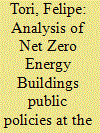

|
|
|
|
|
| Summary/Abstract |
The building sector could have a high impact on the reduction of GHG emissions. Several countries have developed public policies to encourage Net Zero Energy Buildings (NZEB) as one of the main approaches to reach their GHG reduction goals. Chile has adopted different goals and action plans to reduce fossil fuels and GHG emissions. However, there is a lack of public policies for the building sector. Chile should consider the NZEB an effective measure to reduce GHG emissions because this policy has been successful in other countries, regions, or states because NZEB reduce energy consumption in the building sector and produce energy from renewable sources. This research aims to identify, analyze and compare mandatory public policies of different countries towards NZEB. Different countries' public policies are identified and classified through a literature review based on keywords. Chilean public policies are compared concerning them worldwide. We concluded that Chile has not yet developed public policies to promote NZEB as part of the strategies to achieve its environmental commitments for the coming years. We suggested evaluating the technical potential of buildings to reach NZEB standards in different Chilean climates before elaborating future public policies towards NZEB. It is concluded that Chile has to develop regulatory, economic and information, motivation and advice policies towards NZEB that are the mainstream policies worldwide.
|
|
|
|
|
|
|
|
|
|
|
|
|
|
|
|
| 20 |
ID:
107627


|
|
|
|
|
| Publication |
2011.
|
| Summary/Abstract |
China has implemented a series of minimum energy performance standards (MEPS) for over 30 appliances, voluntary energy efficiency label for 40 products, and a mandatory energy information label that covers 19 products to date. However, the impact of these programs and their savings potential has not been evaluated on a consistent basis. This paper uses modeling to estimate the energy saving and CO2 emission reduction potential of the appliances standard and labeling program for products for which standards are currently in place, under development or those proposed for development in 2010 under three scenarios that differ in the pace and stringency of MEPS development. In addition to a baseline "frozen efficiency" scenario at 2009 MEPS level, the "Continued Improvement Scenario" (CIS) reflects the likely pace of post-2009 MEPS revisions, and the likely improvement at each revision step. The "Best Practice Scenario" (BPS) examined the potential of an achievement of international best-practice efficiency in broad commercial use today in 2014. This paper concludes that under "CIS", cumulative electricity consumption could be reduced by 9503 TWh, and annual CO2 emissions of energy used for all 37 products would be 16% lower than in the frozen efficiency scenario. Under a "BPS" scenario for a subset of products, cumulative electricity savings would be 5450 TWh and annual CO2 emissions reduction of energy used for 11 appliances would be 35% lower.
|
|
|
|
|
|
|
|
|
|
|
|
|
|
|
|
|
|
|
|
|